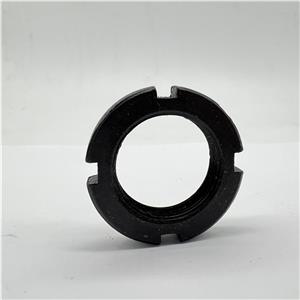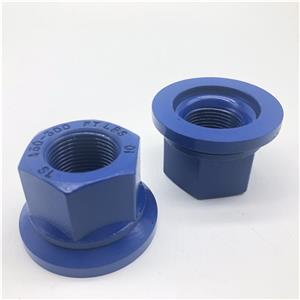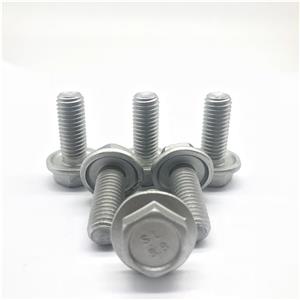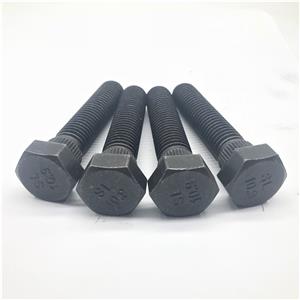Fasteners (bolts and nuts ,screws etc) are the most widely used mechanical foundation.
Fasteners are the most widely used mechanical foundation. With China's accession to the WTO in 2001, China's fastener industry has developed rapidly, and it has built the world's largest professional production system for fasteners with complete specifications and specifications, and has become the world's largest fastener production and export base. However, in recent years, export profits have been declining, trade barriers in Europe and the United States have been high, and Chinese fastener exporters are facing multiple difficulties. It is urgent to accelerate the transition and seek breakthrough.Socket Screw Allen Bolt Socket head cap screw DIN912
Industry Analysis: Fasteners are widely used and the automotive industry has the greatest demand
A fastener is a general term for a class of mechanical parts used to securely join two or more parts (or components) into one piece. A wide variety of fasteners can be found on a variety of machinery, equipment, vehicles, ships, railways, bridges, buildings, structures, tools, instruments, meters, and the like. It is characterized by a wide variety of specifications, different performance uses, and the degree of standardization, serialization, and generalization is also extremely high. Therefore, some types of fasteners with existing national standards are also referred to as standard fasteners, or simply as standard parts.
Figure 1: Fastener Industry Chain
The fasteners used to make the fasteners may be steel, non-ferrous metals, stainless steel, titanium alloys or other engineering materials. The world's preferred steel is the base material for the manufacture of fasteners. In 2017, the proportion of fastener steel produced in China was about 90%, and the proportion of copper fasteners was about 5.1%. Since 2016, due to supply-side reforms and macroeconomic factors, steel prices have been rising, putting a lot of pressure on the profitability of fastener companies.
From the application field, the demand for automotive fasteners accounts for about 23% of the total sales of the entire fastener industry, with the highest proportion in the industry. In the automotive industry, automotive-specific fasteners can be applied to almost every subsystem. For example, the average fastener per vehicle in a light-duty car or car is about 500 kinds/50 kg/4000; on average, a medium-card or a heavy-duty car uses a variety of fasteners of 88 kg/7100. Among them, high-strength fasteners account for about 1/3. The cost of fasteners on a car accounts for about 2.5% of the cost of the entire vehicle; 40% of the total number of basic parts of the vehicle; and the amount of fastening connections on the assembly line accounts for about 70%.
Figure 2: Global Auto Market Production and Sales and Forecasts 2010-2020
Although the growth rate of the automobile market is slowing down, the market competition is still fierce, and the demand for fasteners in the automotive industry, such as lightweight, environmental protection, and long life, continues to increase, and the iterative upgrade of automotive fastener products is faster. The market space is still very huge.
Export analysis: fastener exports ushered in recovery growth, but the average price of products showed a downward trend
In 2012-2017, China's fastener export volume showed fluctuating changes, of which the export value in 2014 was 5.194 billion US dollars, the highest level in recent years; with the EU's cancellation of anti-dumping duties on China's fasteners in 2016, China's fastener export situation Improved, the export value in 2017 was 5.158 billion US dollars, an increase of 11.2%.
Figure 3: Exports of fasteners for 2012-2017
Figure 4: Exports of fasteners for 2012-2017
In terms of changes in export volume, exports in 2012 were the lowest in recent years, and exports have ushered in recovery since 2015. Overall, the trend of export volume is roughly the same as that of exports, but the fluctuations are even greater. Even in 2016, the export volume increased year-on-year, while the export volume decreased year-on-year. It can be seen that the average price of fasteners in China has been declining in recent years, from $1501/ton in 2012 to $1,425/ton in 2017. And with the changes in the global economic situation, prices are expected to continue to decline in the next five years.
Figure 5: Fastener production and exports in 2013-2016
From the production point of view, in 2013-2016, China's fastener production changes are more obvious, and the fluctuation of export volume is basically the same, in which the output in 2015 decreased significantly, and the output in 2016 climbed 7.2 million tons. From historical data, China's total fastener exports account for about 40% of total fastener production.
Market Analysis: Trade wars have a huge impact on fastener exports, forcing enterprises to transform and upgrade
In 2016-2017, China's fastener exporting countries (regions), the United States firmly topped the list, accounting for nearly 21%, followed by Japan and Russia. However, with the end of the EU anti-dumping tax, China's exports of fasteners to the EU countries began to increase. In 2017, the number of fasteners exported to Germany rose from the sixth place in 2016 to the third place.
Figure 6: China's exports of fasteners to different countries (regions) in 2016-2017
Chinese fastener companies are very dependent on the US market. In 2017, the total value of fasteners imported from China in the United States was US$1.1 billion, an increase of 13.57% compared with 2016. It is the second largest import source of fasteners in the United States. The total import value of fasteners in the United States is 23.3%.
Figure 7: Sources of fastener imports in the US market
In 2017, the United States imported the most fasteners from China: other screws and bolts (with or without nuts or washers), the import volume was 309,000 tons, the import value was 480 million US dollars; the nut, the import volume was 114,000 tons. The import value is 220 million US dollars; the self-tapping screws, the import volume is 0.37 million tons, and the import value is 0.84 billion US dollars.
Fastener exit analysis: one of the four fasteners per outlet is a car fastener
Figure 8: Sino-US trade war involves a list of fastener products
Judging from the latest developments in the Sino-US trade war, the US government's increase in tariffs covers almost all fastener products. This is a huge pressure for Chinese fastener companies facing a loss of 1/5 market share in the world. On the one hand, there is still a big gap between China's manufacturing technology and developed countries. China's fastener industry has been implementing structural adjustment, transformation and upgrading, and speeding up efficiency in recent years. If the share of exports to the US is reduced, it will inevitably affect. The speed of industrial development throughout the industry. On the other hand, for Chinese fastener companies, the US market is the world's largest single-country market. Due to the trade war, Chinese companies have to re-find new export growth points. This is the SMEs at the bottom of the industrial chain. It will be a very huge challenge.
However, even in the context of the United States deviating from the principle of international trade fairness and pushing for trade protectionism, the world market is still very broad. What China’s fastener companies are urgently trying to do is to stabilize the pressure, accelerate transformation and upgrading, and only continuously improve products. Quality and quality are fundamental to development.




